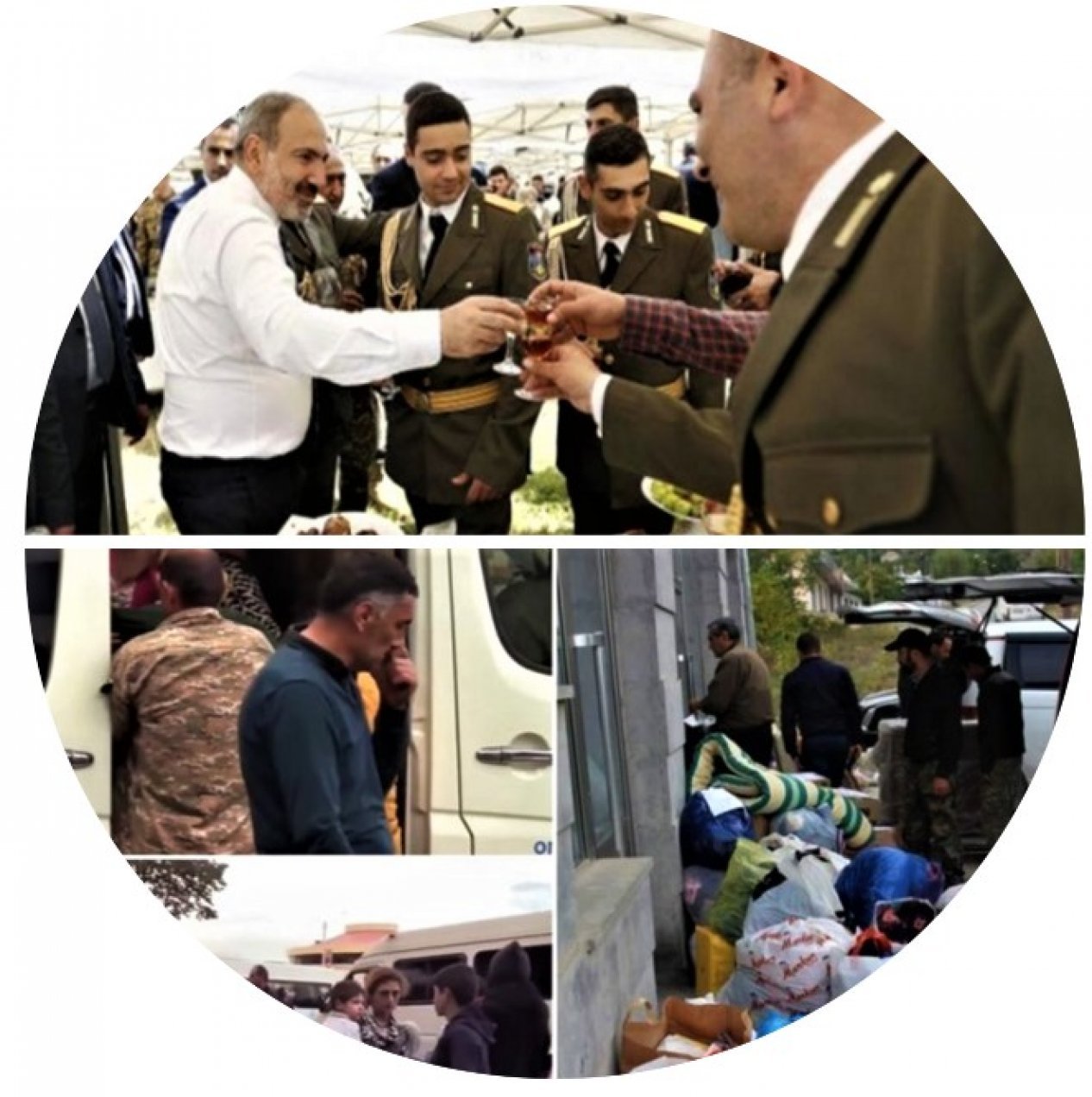
Armenian Prime Minister Nikol Pashinyan, in his speech at the country's national assembly a few days ago, criticized the Karabakh Armenians and accused them of robbing the Armenian army. Pashinyan, in his speech at the Armenian National Assembly, responded to the accusations against the current officials regarding security issues, saying, "Perhaps our biggest mistake was to trust the army." Pashinyan noted that in 2016 the Armenian army was fighting with weapons of the 80s: “Why was the Armenian army fighting with weapons of the 80s in 2016, while the Azerbaijani army received a commodity loan of 4 billion drams from our partners who supplied us with weapons from the 80s and bought the most modern types of weapons. The question arises, why is this so?”
The prime minister of Armenia asked the deputies, “Will you ever address this issue?”
Pashinyan also claimed that no funds were allocated for the army.
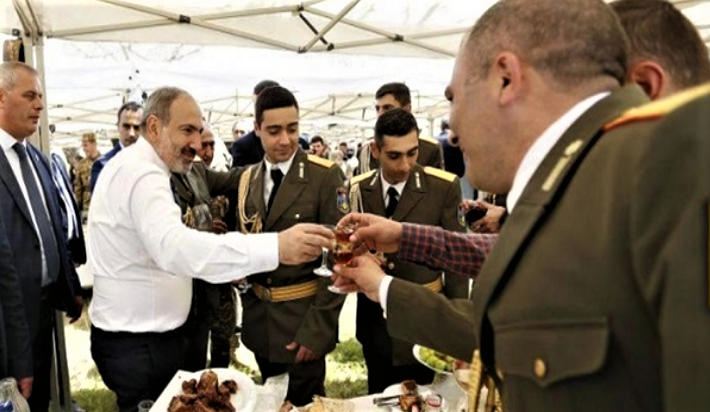
“From 2018 to date, there hasn't been a single case when the military lacked something because the government said there was no money. This is out of the question. This is impossible. Maybe it was our biggest mistake to rely on the military,” he explained.
Faktyoxla Lab. has researched the hatred between Yerevan and Karabakh Armenians, which was in the Armenian agenda for years.
First of all, during our research, we determined that the conflicts between Karabakh Armenians and Armenians living in Armenia, especially in Yerevan and other regions, reached its peak during the Kocharyan and Sargsyan eras. The Armenians of Yerevan, who always insulted the Karabakh Armenians, called them "Turks Mator" (Turkish engine), "Turkatsats hai" (Turkish hybrid Armenian) or simply "pakhstakan" (immigrant) and gave this word an offensive meaning, still use a valid word for them today. they use “shurtvats.” So, what does this word mean?! Apart from this word meaning traitor, trickster and lowly, there is another form of insult called "Karabakh donkey".
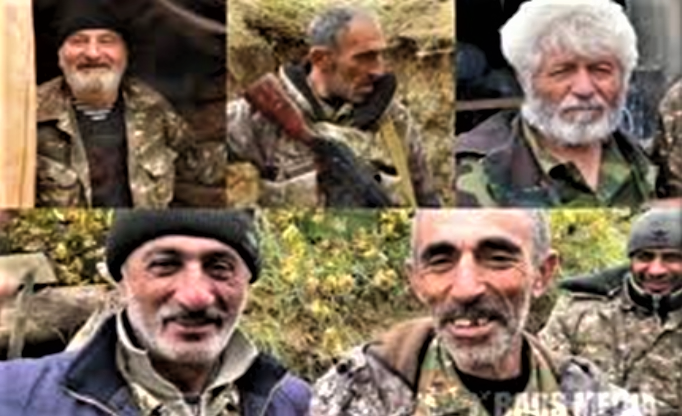
During our research, we saw that there is no end to hatred between Karabakh Armenians and Yerevan Armenians. I think it's enough to say that service in the "Karabakh Army" was the most terrible punishment for an Yerevan Armenian for about 30 years, and these statements started to be heard more often after the Karabakh Armenians were resting in Yerevan and day after day, after the people of Yerevan fought and died for them at the front. So much so that now, while walking on the street, you can hear the following sentence in Armenian - “hey es? te Karabakhchi?’’ (Are you Armenian?! Or… are you from Karabakh?!) (source)
Ruben Melikyan, a former human rights defender in Karabakh, also announced this issue by posting a video on his social media account. He said that two Armenian women got into a taxi in Yerevan; He explained that after one of the women spoke in the Karabakh dialect, the taxi driver used brute force to get them out of the car.

Apart from that, after the defeat in the war with Azerbaijan, the dissatisfaction of the citizens of this country towards everything related to Karabakh is increasing day by day in Armenia. Everyone is now openly saying that more than 6,000 Armenian youth died in Armenia due to Yerevan's Karabakh policy.
For years, experts have defined the color revolution that took place in the country in 2018 as the result of the ongoing internal political struggle between the Armenians of Karabakh and Yerevan. The Karabakh Armenians (identified with former presidents Robert Kocharyan and Serzh Sargsyan) were decidedly "pro-Russian". At the same time, the clan's corruption was absolutely prohibitive. In general, it is they who are responsible for the country's unpreparedness for a new war - after all, Azerbaijan bought the latest weapons in bulk, while Armenia could not do the same during the rule of Kocharyan and Sargsyan.

No steps were taken towards the socio-economic development of Karabakh - from 1994 to 2018, Karabakh remained a subsidized periphery for Armenia. The migration of Armenians from the diaspora to the region could not be organized and employment could not be created. At the time when the conflict resumed in 2020, the total population of the region was estimated at just 150,000, while unemployment in Yerevan forced youth to leave the country. Yerevan Armenians see Karabakh Armenians as responsible for these shortcomings.
In addition, during our research, we came across open hate speeches when the Armenians of Yerevan wrote against the people of Karabakh on social media. For example, a user named Anahit Hovsepyan (who is Yerevan Armenian by the way) expresses his experiences as follows:
“My dears, there are vile scumbags in the world! Thus, a little less than a month ago, I settled in my home an Armenian family who fled Karabakh during the war, an adult Armenian woman with a daughter. Two weeks passed, and her husband and two more women arrived. On top of that, another old man moved in and they started using my house as a hotel. I didn't say anything, I thought they'd be gone soon. After a while I hinted to them that now that the war was over, it was time to leave my house.
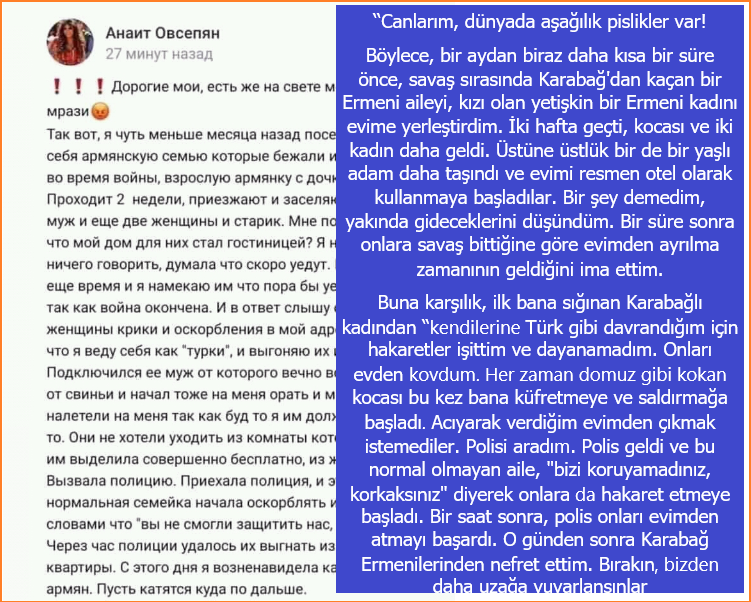
On the other hand, I heard insults from the first Karabakh woman who took shelter in my house because I treated them like a Turk and I could not stand it. I kicked them out of the house. Her husband, who always smelled like a pig, started cursing and attacking me this time. They did not want to leave my house. I called the police. The police came and this family started to insult them by saying "You couldn't protect us, you are cowardly". An hour later, the police managed to kick them out of my house. From that day on, I hated the Karabakh Armenians. Let them roll away from us." (source)
Apart from this, when the Karabakh Armenians, who settled in Yerevan after the 44-day Second Karabakh war, demanded their right to life back from Yerevan, which had deceived them years ago, in February 2022; they were also faced with hate speech. When we pay attention to the video of this protest action, we see this: The Armenians of Karabakh don't even care about the Armenians of Yerevan, who are already in a difficult situation. There is not even a feeling of pity on the faces of passers-by. For example, let's pay attention to a post on the “Republic of Armenia” Telegram channel by the famous Armenian journalist Roman Baghdasaryan.
“The refugees from Karabakh, who participated in the protest today, received billions of dollars from the government in 15 months, received support from everyone, received a lot of help from their relatives and bloggers... After that, they decided to settle in Europe as refugees and sit at the head of the taxpayers of European countries. Maybe that's why we lost half of Karabakh because they always think about who they're going to get the loot from,” Baghdasaryan summed up the situation.
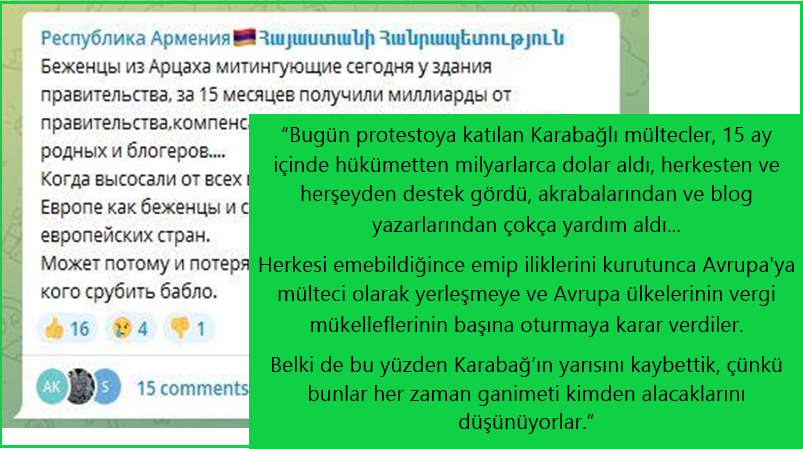
A user named Manushua writes: "Brother, why should we bait these swindlers, these opportunists, I don't understand. They will hide in Russia, under their mother's skirts, no one will come back and protect their Homeland. They will also defend Robik and Serjik. (Referring to Robert Kocharyan and Serzh Sargsyan – ed.) The people of Armenia will also live in train cars?! Why?!”
Or pay attention to what the user named Aro wrote: "How many Armenian mothers lost their children because of these over the last thirty years. Why should those mothers have a good day while they live their lives in sadness?! They are also worried about going to America..."
Another comment: "Remember, on March 1 they came to kill us. We must be different from them. We must always show them where they belong so we don't get into trouble later...or their tongues will grow a mile long and they forget what they used to be." (source)

Particularly ardent hatred towards the people of Karabakh emerged in Armenia after the killing of protesters who had emerged to protest Sargsyan's illegal election to the presidency. The fruits of five months of political tension were Molotov cocktails and metal rods on March 1, 2008.
“For the first time in my life, I did not say that I am from Karabakh. They asked me where I was from, and I quietly said, "I'm from Abovyan." The photojournalist of “ArmeniaNow”, Anahit Ayrapetyan from Karabakh, tells that on March 1, in front of the Myasnikyan monument, everyone went hunting for Karabakh in anger.
Journalist Vahan Ishkhanyan wrote in ArmeniaNow: “This was no coincidence. This was a manifestation of the xenophobia created by the Levon Ter-Petrosyan movement, whose number one enemy was the people of Karabakh.”
Today, the hatred between the Armenians of Yerevan and Karabakh comes to the fore both during the obstacles to the solution of the problem and sometimes the rise of tension. Experts say the main actors behind the tension are Armenian ethnic nationalists known as the "Karabakh clan" and pro-Armenian separatist groups in Karabakh. That’s because Pashinyan's pro-normalization stance harms the interests of these players and their influence in Armenian politics. (source)
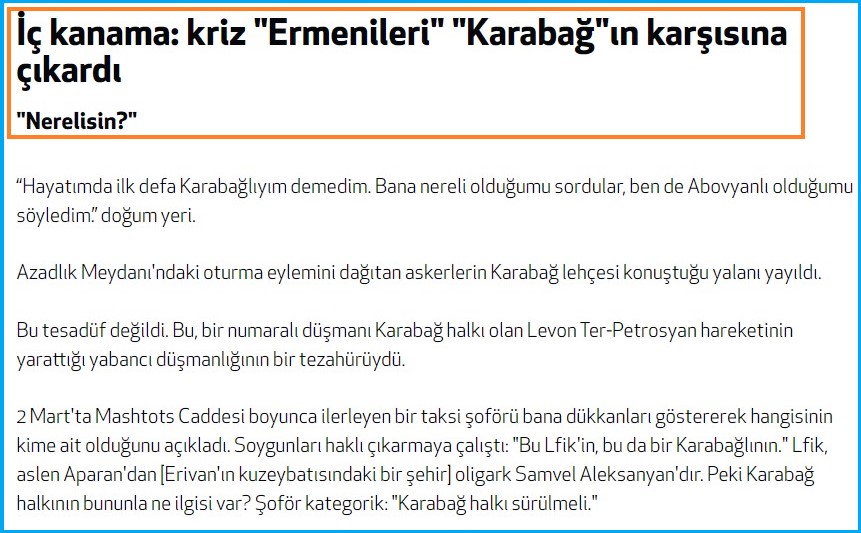
Right after the war, opposition Enlightened Armenia Party deputy Ani Samsonyan even applied to the National Security Service because of a video circulating on social networks that made hate propaganda against the Karabakh Armenians, but the problem has never changed and is not likely to change.
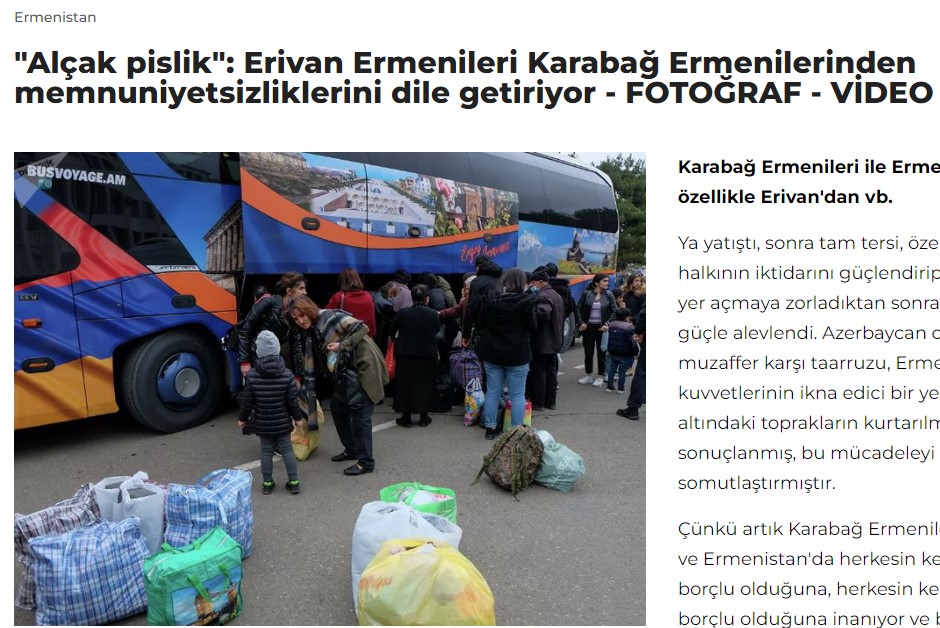
In conclusion,
There is a serious hatred gap between Yerevan and Karabakh Armenians in Armenia and the gap is getting deeper day by day.
The hatred that accumulated in the people against the Kocharyan and Sargsyan, who were in power in Armenia before the Second Karabakh War, came to the fore with the defeat in the war.
The parties are using this hatred for their own political interests, but the Armenian people are seriously uncomfortable with this situation, because they are excluded from regional and global projects.




















